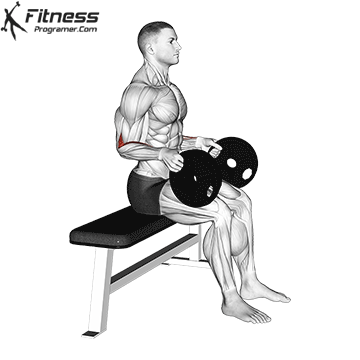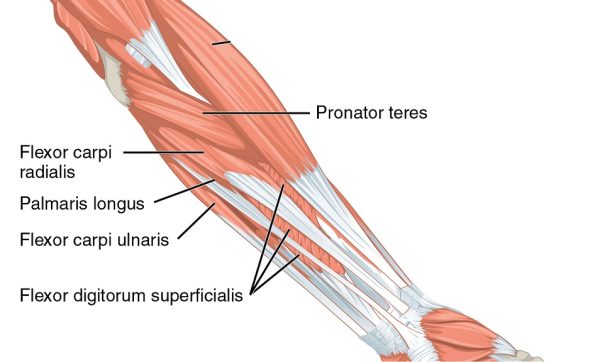Overview
This exercise involves holding a weight plate upright with a neutral grip—thumb up, pinky down—while seated, and curling it using the wrist. It strengthens the wrist flexors and brachioradialis, enhancing grip endurance and wrist stability.
How to do Perform Weighted Neutral Wrist Curl

Sit on a bench with your knees bent and feet flat.
Hold a weight plate vertically (rim grip) in one hand using a neutral grip—thumb facing up.
Rest your forearm on your thigh, allowing the wrist to hang just beyond the knee.
Let the plate lower slowly by extending your wrist downward.
Curl the plate back up, flexing the wrist while keeping the forearm still.
Pause briefly at the top, then repeat for 10–15 slow, controlled reps per arm.
Tips for Proper Form
Keep your forearm firmly planted on your thigh to prevent shoulder and elbow involvement.
Use a full range of motion, allowing your wrist to flex and extend naturally.
Grip the plate tightly for added finger and forearm activation.
Keep movements slow and deliberate—focus on tension, not speed.
Avoid leaning forward or shrugging, which can compromise form.
Common Mistakes
Using too heavy a plate, which reduces control and limits range.
Lifting the elbow off your thigh, shifting focus away from the wrist.
Curling from the elbow, not isolating the wrist movement.
Letting the plate tilt, which reduces muscle tension and control.
Neglecting the eccentric phase, losing a key part of the movement.
Benefits of the Weighted Neutral Wrist Curl
Strengthens Wrist Flexors: Targets the muscles responsible for wrist and grip control in daily and athletic activities.
Targets the Brachioradialis: The neutral grip emphasizes this muscle, contributing to forearm bulk and strength.
Improves Grip Endurance: Useful for improving grip strength in activities like lifting, climbing, and combat sports.
Minimal Equipment Needed: Requires only a weight plate and a bench—ideal for home and commercial gyms.
Builds Joint Stability: Conditions the tendons and muscles around the wrist to resist injury from repetitive strain.
Balances Forearm Development: A great complement to overhand and underhand wrist curls for comprehensive forearm training.
Great for Unilateral Training: Helps identify and correct strength imbalances between arms.
How to Incorporate Into Your Routine
For Beginners: Start with 2 sets of 12 reps using a light plate to learn movement and control.
For Strength: Perform 3–4 sets of 6–8 reps per arm using a heavier plate with perfect form.
For Hypertrophy: Use 3 sets of 10–12 reps as a forearm finisher on upper body days.
For General Fitness: Train once or twice weekly to boost wrist health and grip for daily life.
For Rehab or Light Training: Use a small plate to gently strengthen wrist and finger tendons.
Muscles Worked

Frequently Asked Questions
Can I use a dumbbell instead of a plate?
Yes, but a plate provides a more challenging grip and mimics real-world loading patterns better.
Should I train both hands equally?
Absolutely. This is especially effective as a unilateral movement for balanced development.
How is this different from a hammer curl?
The movement occurs only at the wrist, not the elbow, making it a wrist flexion drill—not an arm curl.
Is this exercise safe for the wrists?
Yes, when performed with proper form and appropriate weight. Start light and build gradually.
Can I perform this standing?
You can, but seated variation offers more stability and isolation by anchoring the forearm.
